
By Kristen Deyo
With so many types of content to choose from, it can be difficult to determine the best options for engaging prospects and turning them into customers. However, one form of content that routinely leads the pack is the customer case study. In fact, according to Hawkeye, 71 percent of B2B buyers in the awareness stage and 77 percent in the evaluation stage cited testimonials and case studies as the most influential types of content.
Whether customer stories exist in PDF format, on their own landing page, or in video form, customer case studies give your personas what they yearn for: proof that your products or services deliver results. Below we dive into nine ways you can start using customer case studies in your marketing.
But First ... What Is a Case Study?
Simply put, a case study is a detailed story about something your customer did or was able to achieve while using your product or service. Case studies go beyond testimonials, instead serving as comprehensive long-form content, each one exploring a topic in its entirety. A case study often discusses a challenge or conflict, how it was approached and resolved, and the positive outcome that was achieved as a result. Great case studies are filled with research and data points that amplify the story and make it more compelling.
The Power of Customer Case Studies in Your Marketing
According to Dimensional Research, 90 percent of buyers who read positive customer success content claimed it influenced their buying decision. And with good reason. Think of it this way: If you were evaluating a solution, what would resonate with you more—a datasheet full with specs and bullets or a story about how a customer had a challenge (possibly similar to yours) and was able to solve it using a product or service? Customer case studies are powerful tools that can help:
- Position your company as a market leader
- Guide your prospects through their buying journey
- Educate prospects on the value and benefits of your product or service
- Provide powerful social proof
- Serve as key pieces of your sales enablement toolbox to empower your sales team to focus on the “why”, instead of the “what” or “how”
The Anatomy of a Great Customer Case Study
A case study is a story. Compelling customer storytelling takes you on a journey; it doesn’t force statistics down your throat. Perhaps the most celebrated style of case study writing is the “Hero’s Journey” as defined by Joseph Campbell:
- Hero suffers a loss or experiences a serious problem.
- Hero attempts to resolve issues through usual means and fails.
- Hero goes on a journey and discovers an ally or new approach.
- Hero overcomes tremendous odds to resolve the problem.
- Hero returns triumphant and tells all about his conquest.
If you want more great tips for writing your own case studies, check out this blog about writing a killer case study.
9 Ways to Use Customer Case Studies in Your Marketing Efforts
1. Showcase case studies on your homepage
Although customer case studies are powerful tools for building credibility, they also help drive more conversions and click-throughs on your website. In fact, according to BigCommerce, when customer case studies and/or testimonials are present on your website, people are 58 percent more likely to convert. And because your homepage is often the first page your visitors see, it’s prime real estate for offering social proof and enticing visitors to stay on your site longer and ultimately convert. Here’s a great example from Poynt (a payments platform trusted by over 100,000 merchants across the world) of how to feature customer testimonials:
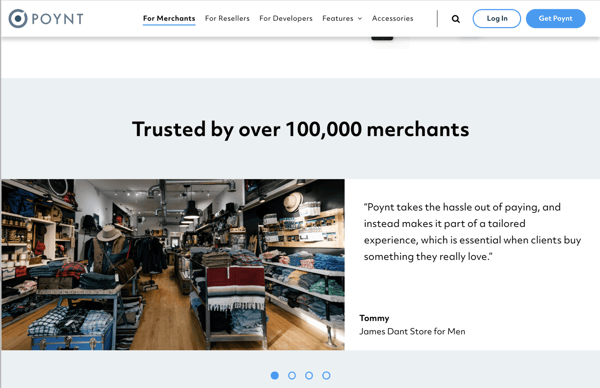
Bonus tip: Don’t stop at your homepage. Use pull quotes from your case studies and sprinkle them on other relevant pages across your website for added social proof. This could include your individual product and/or service pages, pricing page, or about us page.
2. Create a designated place for your case studies on your website
As you build a library of customer success stories, it’s important to showcase them in a meaningful way. Having a designated marketing case studies hub on your website (see ours below for inspiration!) is one way to prominently showcase all your customers in one beautiful, digitally consolidated place.
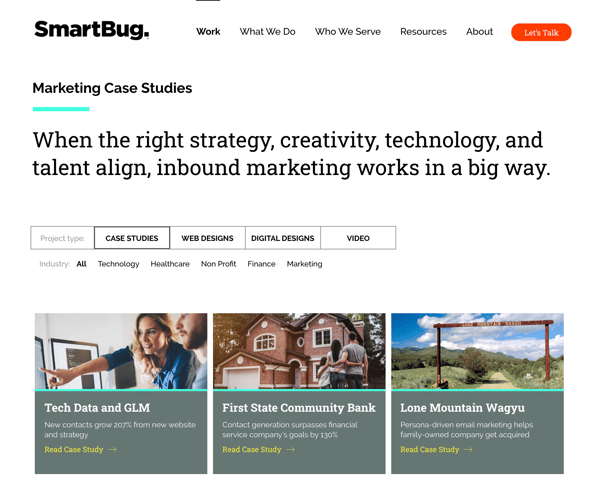
And although case studies can certainly exist in PDF format, individual landing pages showcasing your customer stories can provide a rich experience for website visitors. Here’s a financial services customer case study example:
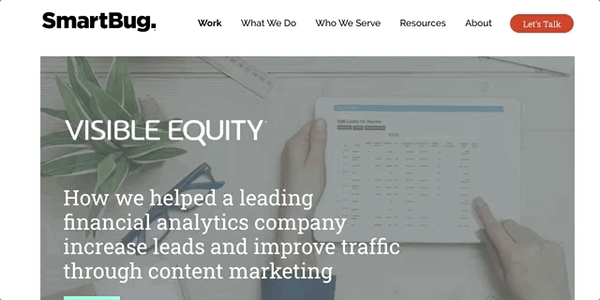
3. Use case studies in your blog content
Consider repurposing your customer stories into an abridged blog post. This can serve as an inspirational, awareness-stage post that focuses less on the data and insights, and more on the achievement and transformation your customer experienced. At the end of your blog post, include a call to action (CTA) to download the full customer story.
Here’s a great example from one of our clients, Accumula, and their customer spotlight feature for their customer Adorn.
4. Use customer stories and testimonials in your premium content
Take your premium content one step further by adding social proof. Much like the abridged, inspirational blog post, you can use a similar format to include in your guides, white papers, infographics, and so on. This will enhance your topic and build credibility.
5. Turn traditional case studies into video content
According to a report from HubSpot, it is estimated that more than 50 percent of consumers want to see videos from brands more than any other type of content. I know what you’re thinking: Video is expensive and labor-intensive. But the truth is, it doesn’t need to be. There are some great video tools and apps out there that make shooting, editing, and packaging videos a breeze.
Here’s an example from First State Community Bank, which turned one of their customer stories into a compelling video featured on their homepage and YouTube channel that was created completely in-house!
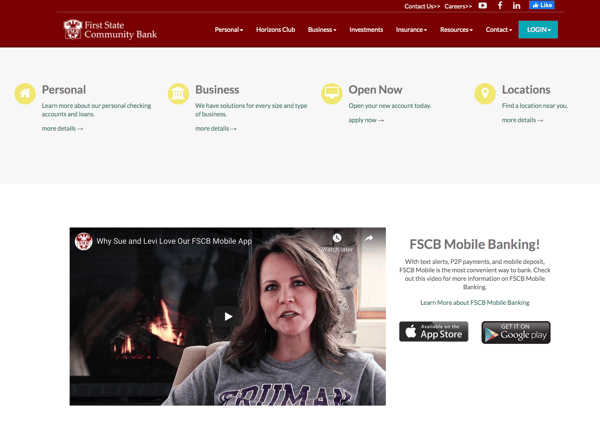
6. Add case studies to your email nurturing
Whether B2B or B2C, email marketing continues to be the top winner in terms of driving the best return. In fact, email generates $38 for every $1 spent—that’s an astounding 3,800 percent ROI! Here’s an example from Shopify’s Master Series:
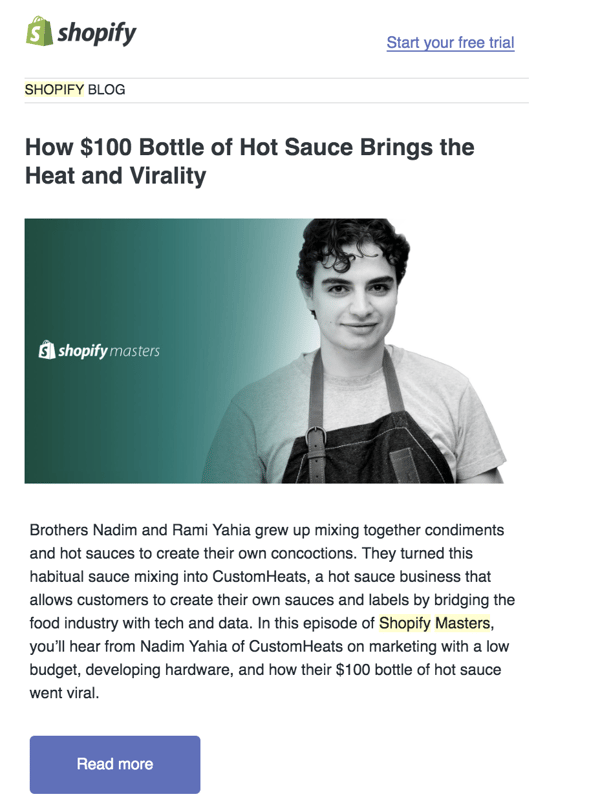
7. Give case studies to your sales team
Case studies can be valuable resources for your sales team. In fact, customer case studies can boost your deal closing ratio by 70 percent and your sales by 185 percent! Customer stories help empower your sales team to focus less on product specs, and more on how and why your product or service adds value, making case studies a powerful tool in your sales enablement toolbox. Use case studies during the sales process to:
- Build credibility during initial sales calls and/or demos
- Overcome objections by contextualizing your offering with a real-life example
- Help your sales team focus on the value your product or service brings, not specs
8. Showcase your customer stories across your social media channels
Your social channels are a great place to share testimonials and snippets from your case studies to engage your audience. Here are a couple examples from Entire FS and Healthinomics:
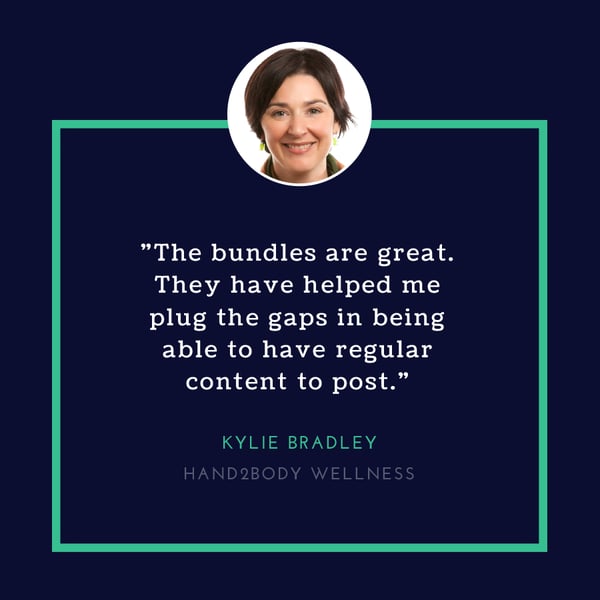
Companies that share authentic, user-generated content build more trust and credibility with their social audience.
Pro tip: Use a tool like Canva to build testimonial social images. The best part? They have thousands of free templates, appropriately sized for all social channels, from Facebook and Twitter to Instagram and LinkedIn.
9. In-person and digital speaking engagements
If you’ve turned your customers into evangelists, consider having them join you for field events or speaking engagements to share their story. Think about it this way: What would you rather see? A company discussing how great they are or a company letting their customer talk about their own experience with the company’s product or service from their point of view?
Here are a few ways you can include your customers:
- Industry roundtable
- Speaking sessions at an industry event or trade show
- A podcast episode featuring your customer
- Co-host a webinar on a niche topic
Customer stories are one of the most powerful tools in your marketing arsenal. Take the time to delight customers and cultivate trusting relationships. Remember: Customers who love you will be willing to shout from rooftops on your behalf. When you’ve successfully created a compelling customer story, repurpose it and leverage it across channels to engage prospects and turn them into customers.
We want to hear from you! Where are you seeing success with your customer case studies? How are you leveraging them in your current marketing efforts? Let us know in the comments or reach out to us on social!
About the author
Kristen Deyo was formerly a Director of Marketing Strategy at SmartBug based in Kingston, Ontario, Canada. She has 8+ years experience developing strategies for primarily B2B SaaS/technology companies and hyper-growth startups. She holds degrees from Queen's University (Cha'Gheill!) and the St. Lawrence School of Business. When not digitally plugged in, you can find her enjoying a good happy hour or planning her next adventure. Read more articles by Kristen Deyo.























